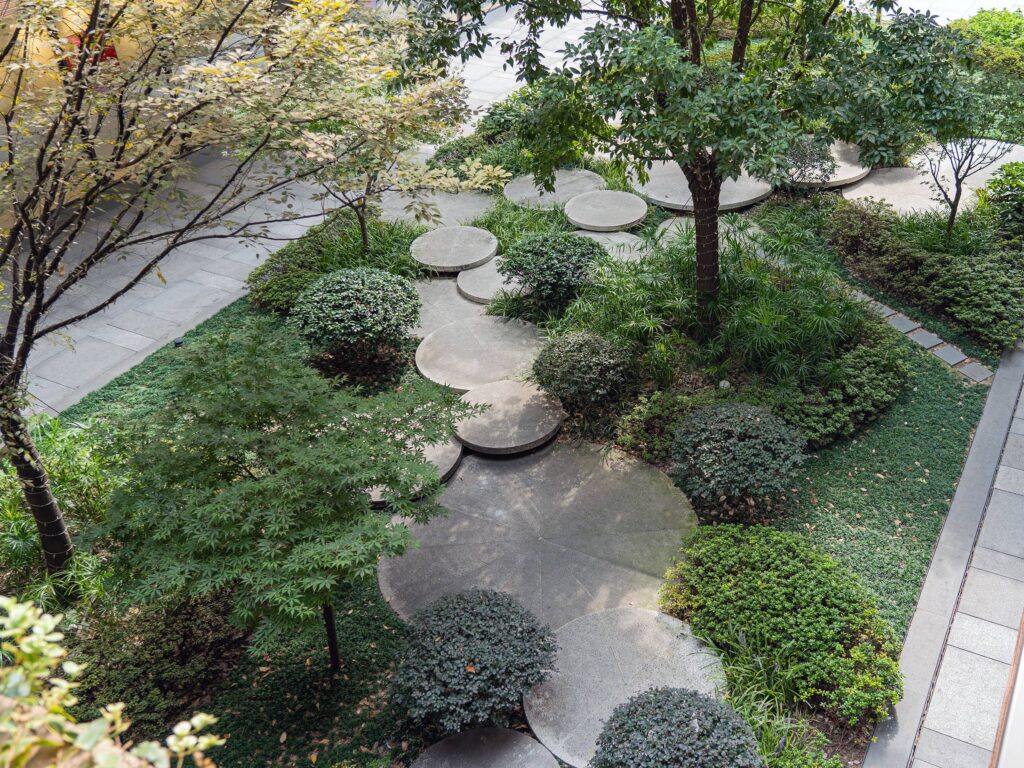
Table of Contents
Sustainable Landscaping: Enhancing Beauty while Preserving the Environment
Are you looking for a way to make your outdoor space greener and more sustainable? Sustainable landscaping is the answer! You can create a beautiful outdoor area that is also ecologically sound. From utilizing water-conserving plants to creating green spaces that sequester carbon, there are numerous ways to make your outdoor space more sustainable. Learn more about sustainable landscaping and how to create a greener, more sustainable future for your outdoor spaces.
- Sustainable landscaping aims to sequester carbon and be responsive to the environment, with landscape architects playing a crucial role.
- Sustainable landscaping offers benefits such as increased energy efficiency, restored habitats, minimal maintenance, reduced runoff, and natural fertilization.
- Xeriscaping, a technique for water usage reduction, is compared to sustainable landscaping, which utilizes native plants and efficient irrigation techniques.
- Sustainable landscaping ideas include water-saving techniques, erosion control methods, permeable hardscapes, xeriscaping, and resource conservation through rain harvesting and composting.
What is Sustainable Landscaping?
Frequently, sustainable landscaping is the practice of creating outdoor spaces that are environmentally friendly, healthy, and beneficial to the community. Sustainable landscapes are designed to be responsive to the environment, re-generative, and capable of sequestering carbon. Benefits of sustainable landscaping include increased energy efficiency, restored habitats, and economic and social value. Landscape architects work with other professionals on interdisciplinary teams to create innovative models for sustainable design. To learn more about sustainable landscaping, explore the projects on the Sustainable Sites Initiative website, watch animations, and contact the American Society of Landscape Architects. Sustainable landscaping is an essential practice for creating a greener future for our outdoor spaces.
Benefits of Sustainable Landscaping
By practicing sustainable landscaping, the environment, communities, and businesses can all reap the rewards of increased energy efficiency, restored habitats, and economic and social value. Native plants require minimal maintenance, reducing the use of polluting power equipment and toxic materials. Healthy soil with the right balance of nutrients absorbs and retains moisture, eliminating runoff and puddles. Organic materials provide natural fertilization, weed control, and moisture retention. Interdisciplinary teams create models that outline a path to a sustainable future. Collaboration leads to innovative designs that benefit the world and create value in all forms. Sustainable landscaping is essential for preserving and improving the environment.
Sustainable Landscaping vs Xeriscaping
Although sustainable landscaping can bring numerous benefits, xeriscaping can also effectively reduce water usage and create a more sustainable outdoor space. Xeriscaping is a technique that utilizes native and drought-tolerant plants, mulch, and other materials to minimize the need for supplemental water. This landscaping method can help conserve resources and create a low-maintenance, attractive outdoor space. Xeriscaping also requires less energy for maintenance, such as mowing and pruning, and can help reduce air and water pollution. Although xeriscaping can be a more sustainable choice in some areas, there are still benefits to sustainable landscaping that can be beneficial in other climates and locations. Sustainable landscaping can utilize native plants and efficient irrigation techniques to create a beautiful, water-saving landscape. It can also help reduce soil erosion and improve air quality while providing wildlife habitat and stormwater management. In addition, sustainable landscaping can give a sense of community and enhance quality of life. Both xeriscaping and sustainable landscaping can create a greener future for our outdoor spaces.
Sustainable Landscaping Ideas
Using water-saving, native plants, and efficient irrigation techniques, sustainable landscaping can create a beautiful, greener outdoor space. Erosion control methods like rain gardens, swales, dry creek beds, French drains, and retaining walls help preserve soil and reduce pollutants in stormwater runoff. Native plants require less maintenance and provide habitat for wildlife. Permeable hardscapes like pea gravel and porous asphalt are better for the environment than traditional lawns. Xeriscaping uses drought-tolerant plants to conserve water. Rain harvesting and composting also help save resources. Rock gardens add visual interest, while drip irrigation systems promote water efficiency. Sustainable landscaping can have a positive impact on our environment.
Best Plants for Sustainable Landscaping
Earth-friendly landscaping doesn’t have to be dull–it can be filled with vibrant native plants such as Actaea’ Queen of Sheba’, Agapanthus’ White Heaven,’ and Ammi Majus! Sustainable landscaping involves:
- Selecting plants responsive to their environment, re-generative.
- Sequestering carbon.
- Cleaning the air and water.
These plants provide multiple benefits, such as increasing energy efficiency, creating economic value, and restoring habitats. Landscape architects work with other professionals to create innovative models that outline a path to sustainable future practice.
Ideal choices for sustainable plants include:
